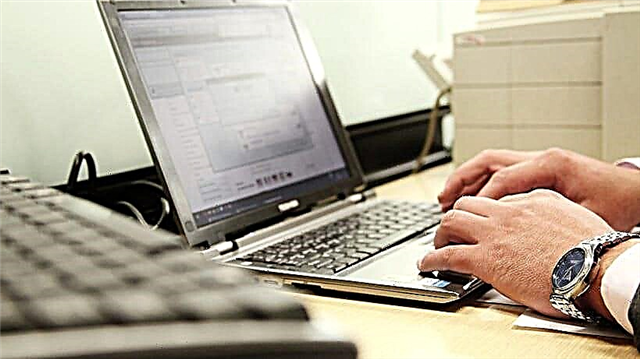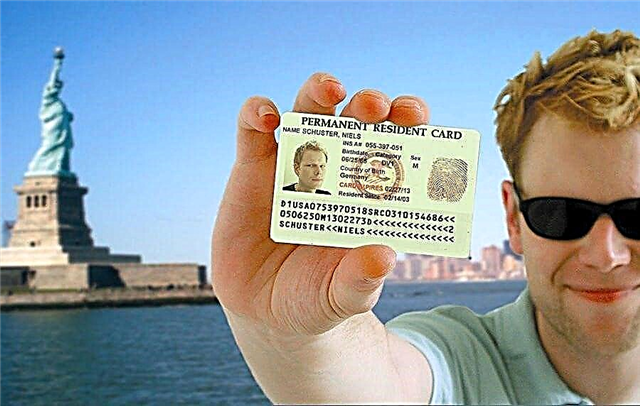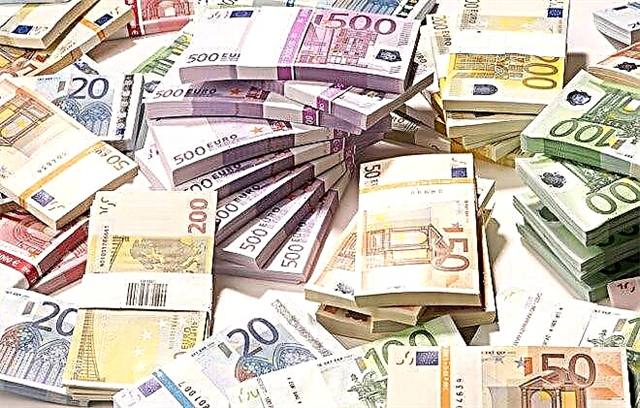Since 2002, the motley currency map of a united Europe has lost much of its diversity, and by 2021, 19 countries have officially switched to the euro. The French even noted with some nostalgia in the calendar the day when the French currency finally ceased to be called the franc and the country completely switched to banknotes and coins of the European Central Bank.

An excursion into the history of French money
Today, few people will immediately remember what currency was used in France until 2002, when the euro was introduced into circulation. Before the franc was finally "buried" on February 17, 2021 (it was no longer accepted for exchange even by the Banque de France), the national currency of France before the euro successfully existed for several centuries. It began in 1360, when King John the Good was freed from English captivity.
Throughout its history, the franc has been transformed several times. Initially, it was minted from pure gold, then a silver equivalent appeared, and in 1795 the first paper notes were issued.
In early 1960, the French franc underwent a denomination, and until 1963 the name of the currency was used with the prefix "new".
Since 1950, an interstate agreement on the preservation of the Franc zone has been officially enshrined, the main principle of which has become a fixed parity rate of all national currencies of the participating countries. Since 2002, the conversion rate for the Zone has been based not on the franc, but on the euro.
Take a sociological survey!
[yop_poll id = ”10 ″]
Cash and non-cash payment methods in France
The universality of the dollar as a payment unit in Paris has no practical significance, as, indeed, and other currencies of the world. In all institutions of the country, the legal means of payment is exclusively the euro - the only currency in France as of 2021.
For tourists planning a trip abroad, it is better to take care of currency exchange at home, taking into account a number of recommendations:
- the conversion rate of the Russian ruble to the euro in Russia is much more profitable than in exchange offices in France;
- if savings are stored in dollars, then it is better to change them upon arrival at the holiday destination in order to avoid losses on a double exchange (dollar for ruble, and then ruble for euro);
- it is worth ordering a Visa or MasterCard credit or debit card from a servicing bank with the possibility of making payments abroad;
- if the exchange of the entire required amount still did not work out, you need to stock up on at least a small amount of euros so that they will be enough for two or three days of stay in the country.
Having a small stock will allow you to avoid the extortionate rate and commissions in exchange offices located at the airport, train station and hotel.
Additional payments during exchange operations are common, and their size can reach several tens of euros. If there is no suitable exchanger or branch of a state bank nearby, it should be remembered that the most profitable is the commission when withdrawing cash from ATMs in France (at least 1% plus the commission for conversion in favor of the issuing bank).
For those who do not speak French well, it is better to look for ATMs with an ATM icon: when working with them, you can select a menu in Russian.
In addition to cash, all French shops and establishments accept bank cards. Another thing is that when conducting non-cash transactions, there are also features:
- when leaving home, it is better to issue a smart card (or a card with a chip), since not all ATMs and terminals accept magnetic stripe cards;
- if there is a currency account in euros, then it is most profitable to order plastic for it, then for each transaction only the commission of the issuing bank will be charged;
- if the card is linked to a ruble account, then you will have to pay the conversion rate (the fee will be charged by the Russian bank that issued the card);
- of course, only Visa and MasterCard are accepted, foreign national payment systems are not honored in France. Moreover, it is better to take with you cards of the World class or not lower than Classic - problems may arise with Visa Electron and Maestro.
It is also worth remembering that the base currency of Visa is the dollar, while MasterCard works with the euro, so the rates of the latter may be more attractive.
Up-to-date information about the course in France
The promptly updated exchange rate against the euro is published on the website of the Bank of France in the statistics section. The information provided is grouped in such a way that the resource visitor can track the daily and monthly average dynamics.
However, the data presented can only serve as a guideline, since the applied values at the bank or exchange office may have significant deviations.
The difference in rates arises from the collection of additional commissions. For example, when exchanging currency through automatic devices in places where tourists gather for 1 euro, you can pay up to 24% plus a plus to the established rate.
Currency exchange methods
 Untrained travelers, especially those arriving in France for the first time, can fall into the very first financial trap by handing over currency at machines and exchange offices right at the airport. This can be done only in cases when money is needed urgently, for example, to get from Paris to the booked hotel in Bordeaux.
Untrained travelers, especially those arriving in France for the first time, can fall into the very first financial trap by handing over currency at machines and exchange offices right at the airport. This can be done only in cases when money is needed urgently, for example, to get from Paris to the booked hotel in Bordeaux.
At the same time, it is better to change a very small amount of euros. Exchange transactions for larger amounts should be performed already in the city:
- in exchange offices (bureaux de change) without a commission, you can find them at the intersection of tourist routes (you need to pay attention not only to the favorable rate, but also the signs of No Commission or Sans commissions);
- in branches of state banks;
- at ATMs;
- at the post office;
- in large supermarkets (sometimes even dollars are accepted at the checkout, while change will be given in euros).
In order not to take away unpleasant memories of wasted money from the country, you need to remember several ways that allow you to make money on careless tourists:
- owners of exchangers deliberately post the selling rate instead of buying, which creates the illusion of a profitable exchange (the client should look for numbers opposite the VEND inscription);
- do not announce the amount of the commission in advance;
- at the bank, the amount of the additional deposit will be from 3-5 euros to 24% of the transaction amount, however, these costs can be offset by a favorable exchange rate;
- when selling dollars or Russian rubles in exchange for euros, the overpayment can be up to 10% of the amount.
Some travelers, who in advance asked what currency they use in France, decide to pay with bank cards while traveling, rightly considering them to be more modern means of calculating and storing funds than cash.
VAT and Tax Free Terms of Use
 When buying goods for 175 euros or more, a tourist can try to get back part of the money spent (in the amount of the accrued VAT). The tax refund will not exceed 16.67% of the purchase amount, because the standard rate in France is 20% (retroactive mechanism: price / 120 * 20 = 16.67%).
When buying goods for 175 euros or more, a tourist can try to get back part of the money spent (in the amount of the accrued VAT). The tax refund will not exceed 16.67% of the purchase amount, because the standard rate in France is 20% (retroactive mechanism: price / 120 * 20 = 16.67%).
Successful registration of tax compensation (DETAXE) is possible subject to the obligatory observance of certain conditions:
- stay in France and the EU for less than 6 months a year;
- age - over 16 years old;
- an amount of 175.01 or more euros must be spent in one day and in one place;
- compulsory registration of Tax Free at the place of payment and affixing a stamp at the border. In 2021, you can avoid crowding in queues at customs officers, but use the PABLO electronic system (Program d 'Apurement des Bordereaux par Lecture Optique de code-barres - Reconciliation of receipts by optical barcode reading);
- you must apply for a refund within 90 days from the last day of the month in which the purchase was made.
The customs department took care of issuing instructions for those wishing to issue Tax Free through PABLO terminals.
Customs currency restrictions and regulations
 French customs officers are authorized to inspect any person crossing the border of the country if even the slightest suspicion arises, but more often than not, the likelihood of inspection increases when carrying non-standard baggage. At the same time, the restrictions for EU citizens are much softer than for those who present the passport of a country that is not a member of the Union.
French customs officers are authorized to inspect any person crossing the border of the country if even the slightest suspicion arises, but more often than not, the likelihood of inspection increases when carrying non-standard baggage. At the same time, the restrictions for EU citizens are much softer than for those who present the passport of a country that is not a member of the Union.
In addition to the commodity norms of import, there are also nuances when transporting money and values equated to them. The assessment of compliance with the permitted customs criteria is carried out according to simple rules:
- the French do not limit the maximum amount of currency that can be imported from outside the EU, but require that values of more than 10,000 euros be declared when passing through customs;
- in whatever currency the values are imported, the equivalent for the assessment will remain the national currency of France at the current moment and at the exchange rate on the day of entry into the country, that is, the euro;
- the following are equated to cash: tickets and coins of national banks, securities, traveller's checks and bearer's checks, letters of credit, bills of exchange and bonds;
- the value of all valuables is summed up, the resulting value should not exceed 10,000 euros, otherwise they will have to be declared and, possibly, the origin and purpose of the funds will have to be explained;
- export of currency is not limited and does not require additional explanation.
When crossing the border without declaring and including in the limit, you can transport money stored on debit and credit bank cards, since they fall under the definition of non-cash means.
When importing goods purchased outside the EU or outside the territories subject to French customs regulations, the duty is not charged if:
- the total cost does not exceed 300 euros for those traveling by land transport;
- the amount of goods transported by plane or by sea is less than 450 euros;
- items are not for commercial purposes.
FAQ
 Going on a trip to an unfamiliar country, most often a tourist is interested in the names of the most interesting sights and issues of rational spending of finances abroad.
Going on a trip to an unfamiliar country, most often a tourist is interested in the names of the most interesting sights and issues of rational spending of finances abroad.
- How much should I take with me?
Each traveler determines his own budget, but it is worth noting that Paris is a very expensive city. The average cost of one tourist day varies from 40 to 100 euros. Those who want to save money on a cultural program need to know:
- some state museums do not charge admission fees, or organize free admission on Sundays (for example, Musée Cognacq-Jay, Museum of Modern Art, Maison de Balzac, Musée du Louvre );
- students who have issued an ISIC (International Student Identity Card) can take advantage of special discounts;
- children of all ages are allowed free admission (usually up to 4 years old), and teenagers under 12 can enter most commercial entertainment venues at half price.
- Which is more profitable: a bank card or cash?
The number of transactions and the amount of cash settlements in Europe is significantly less than in Russia. Therefore, the desire to pay by card will not surprise even the seller of a small shop in the tourist area. However, to hedge against surprises, you need to put at least a little cash in your pocket. It will be nice if the cashier gives out small bills in denominations of 5, 10 and 20 euros during the exchange.
If it is possible to take a bank card with you, then it is more profitable to use:
- linked to a currency account in euros;
- secure in the sense of fraud (it is better to refuse cards with contactless payment or without PIN confirmation), because it will be difficult to prove something without good French.
Depending on what kind of money a tourist is ready to leave in France, the card will be convenient for those who do not want to declare large amounts of cash transported across the border.
- How to determine the authenticity of the euro during the exchange?
European culture and law-abidingness does not exclude the dishonesty of individuals who want to make money on deceiving foreigners. When currency exchange does not take place at a bank or ATM, you need to have a clear idea of what French money looks like and remember the main signs of the authenticity of banknotes: watermarks, security thread visible to the light, embossed print, hologram, ink that changes color at different angles.
It is good if the traveler familiarizes himself with these signs in advance. The most accurate information is available on the Bank of France website in the Billets section. It should be remembered that the design of banknotes may differ depending on the country of origin, but this does not affect the ability to pay with them anywhere in the European Union.
Conclusion
In 2021, the franc finally passed away from the life of the French, and the only legal currency in France now is only the euro. In this regard, tourists who keep their savings in another currency will have to prepare for additional spending on conversion. This can be done either at home before leaving, or immediately after arriving in the country. Additional information about rates and commissions in French exchangers will help you make a financially sound decision.











